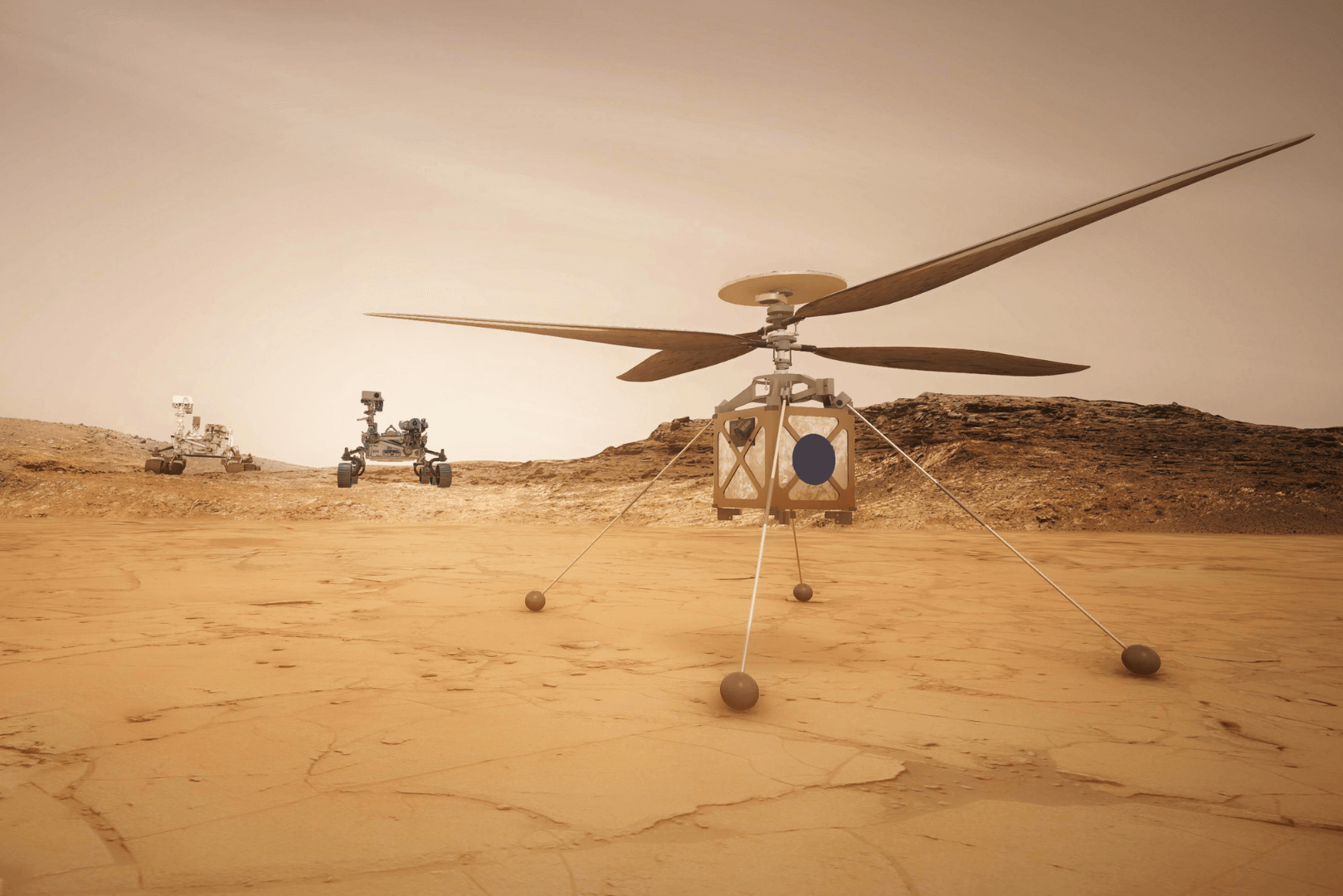The National Aeronautics and Space Administration, U.S.A. (NASA) made history as Ingenuity, the small robotic helicopter aboard their recently-landed Mars rover Perseverance, became the first-ever aircraft to achieve controlled, powered flight on another planet besides Earth.
At exactly 3:34 a.m. E.D.T. on April 19, 2021, Ingenuity finally took flight, 9 days after its initial rotor spin test failed, prompting the organization to delay its launch for a few days. The data was transmitted from the helicopter via Perseverance to NASA’s Jet Propulsion Laboratory (JPL) in Southern California around 3 hours later, at 6:46 a.m. E.D.T..
The Purpose
Ingenuity is a 49-centimeter-tall (19.3-inch-tall), 1.8-kliogram (4-pound) helicopter designed to test the feasibility of aerial-based exploration of the red planet. It was equipped with both unique components and off-the-shelf commercial parts, several of which were from the smartphone industry. Its two rotor blades, stacked one atop the other, are 1.2 meters (4 feet) wide, and were designed to fly on Mars, with gravity ⅓ the strength of and an atmospheric volume less than 1% of Earth’s. Ingenuity’s rotors, thus, require a lot more spin to generate enough lift for the helicopter to achieve sustained flight in the thin Martian atmosphere.
The Timeline
Perseverance, which launched from Cape Canaveral Air Force Base, Florida last July 30, 2020, was confirmed to have landed on the red planet on February 18, 2021, with Ingenuity attached to the underside of the rover. Around 60 days after landing on Jezero crater, the small helicopter was deployed, after which Perseverance drove around 64.3 meters (211 feet) away to Van Zyl Overlook to give the rover a safe “buffer zone” away from the helicopter once its test flight began.
On April 10, Ingenuity encountered problems with its initial rotor spin test. As a result, NASA delayed Ingenuity’s first test flight, saying the test flight will be performed “no earlier than April 14.”
And finally, on April 19th at exactly 6:46 a.m. E.D.T., NASA received data to confirm that Ingenuity truly achieved controlled, powered flight on Mars, with the helicopter’s altimeter readings showing it taking off, hovering at a height of 3 meters (10 feet) for 30 seconds, then landing back safely for a total flight time of 39.1 seconds. Perseverance recorded the flight in both video and pictures, and were sent back to NASA for confirmation.
The first April 19 test flight was only the first of several, with Ingenuity being on the 16th sol (Martian day) of its 30-sol flight test window. Over the next three sols, the Ingenuity team will go over the data obtained from the flight, and will plan ahead for a second experimental test flight, set for no earlier than April 22. The team will then expand the helicopter’s flight profile should it survive the second flight, with the helicopter expected to achieve five (5) flights total. Perseverance, on the other hand, is expected to resume its original mission of seeking evidence of ancient microbial life, and of testing oxygen production on the Martian atmosphere for future manned Mars missions.
Said NASA Associate Administrator for Science Thomas Zurbuchen:
“Now, 117 years after the Wright brothers succeeded in making the first flight on our planet, NASA’s Ingenuity helicopter has succeeded in performing this amazing feat on another world. While these two iconic moments in aviation history may be separated by time and 173 million miles of space, they now will forever be linked. As an homage to the two innovative bicycle makers from Dayton, this first of many airfields on other worlds will now be known as Wright Brothers Field, in recognition of the ingenuity and innovation that continue to propel exploration.”
Ingenuity carries with it a piece of fabric from the wing of the Wright Flyer, the very same powered aircraft the Wright brothers Orville and WIlbur used to achieve Earth’s first controlled, powered flight on December 17, 1903.
Bibliography
- DeLuca, L. (2021, April 19). Relic from the Wright brothers’ first plane flies again on Mars. Astronomy Magazine. Retrieved April 20, 2021, from https://astronomy.com/news/2021/04/fabric-from-the-original-wright-flyer-takes-flight-on-mars
- NASA/JPL. (2021, April 10). Mars Helicopter Flight Delayed to No Earlier than April 14. NASA. Retrieved April 20, 2021, from https://mars.nasa.gov/technology/helicopter/status/291/mars-helicopter-flight-delayed-to-no-earlier-than-april-14/
- NASA/JPL. (2021, April 19). NASA’s Ingenuity Mars Helicopter Succeeds in Historic First Flight. NASA. Retrieved April 20, 2021, from https://www.nasa.gov/press-release/nasa-s-ingenuity-mars-helicopter-succeeds-in-historic-first-flight











